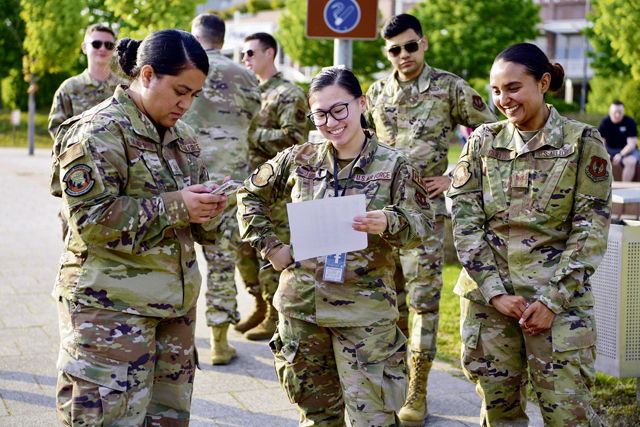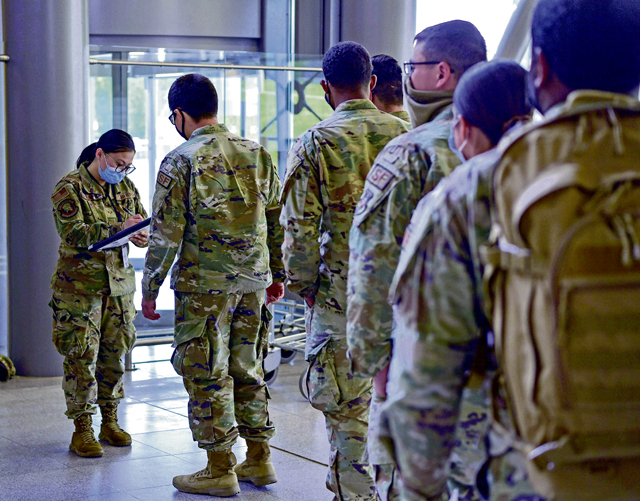
The Deployment Transition Center has helped more than 20,000 redeployers “return strong” since 2010.
The program assists the transition from deployed environments back to home life, and provides critical reintegration skills and decompression opportunities for redeployers.
The DTC recently surpassed 20,000 redeployers who have made this their first stop before returning home.
Redeployers is a term used for members who are deployed to one location and will deploy to Ramstein prior to their return home.
“Upon arrival redeployers have the opportunity to talk about their deployment. The conversation starts from the day they were notified of deployment to where they are right now,” said U.S. Air Force Maj. Michelle Rodriguez, 86th Mission Support Group Detachment 1 DTC program director. “The DTC also offers an excursion day where redeployers begin the reintegration process into non-deployed life followed by combat bridge.”
Combat bridge creates a space for individuals to learn and relate to each other during the process of transitioning from deployment to arriving home.
“We try to touch on the whole Airman concept: Mental, physical, social and spiritual fitness as pillars to talk about realistic expectations of reintegration,” said Rodriguez. “Recognizing how they are going to transition from deployed to home life is important because it allows individuals to understand their feelings are normal and the resources that are available.”

The DTC program has evolved in the last decade to meet the changing demand of deployed members.
“Initially this program was designed for deployed military members who dealt with combat, but then research started showing individuals with non-combative deployments struggling upon coming home,” said Master Sgt. Antonie Alphabet, 86th MSG Det 1 senior enlisted leader. “After multiple deployments, and being away from family and normal life, non-combative deployers were experiencing some of the same stress reactions and negative outcomes.”
Deployments affect everyone differently, but having a support group can make a big difference in the process, Alphabet said.
“We are going to do what we can to get them back home in just as good, if not better, condition than they left, ” said Lt. Col. Kenneth Sterling, 86th MSG Det 1 commander. “When we connect them with resources that can help them at their home station, we’ve lowered the barriers to seeking access for help.”
The DTC is supported by 37 team members who come from different Air Force specialty codes and combine their knowledge and skills to better serve redeployers.
“Thinking about going home can be overwhelming, so having an opportunity to relax and talk to people who went through the same things I was going through helped me,” said Senior Airman Demyrah Thomas, a redeployer participating in the DTC. “Talking to everyone and breaking down what we experienced was eye opening.”
Along with bridging positive combat and homefront skill sets, the DTC works to improve deployed life as well.
“We are a readiness program,” said Alphabet. “Our aim is to help them decompress and make improvements in all aspects of deployment readiness.”
Currently they are working to expand the DTC and its ability to serve more military members.
“I think that the main hurdle we’ve experienced is getting people to become more knowledgeable about the program,” said Alphabet. “We encourage supervisors to come to the center and utilize the amenities we have here to better understand the program.”
To find out more about the DTC, visit their website at: https://www.ramstein.af.mil/Deployment-Transition-Center/


